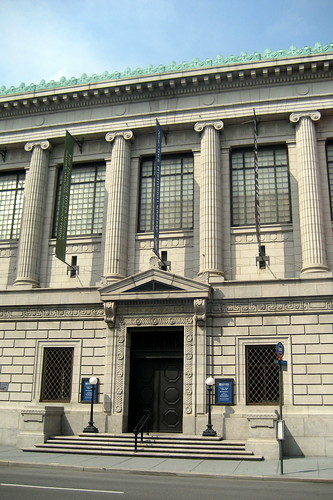JOHNS HOPKINS UNIVERSITY
DEPARTMENT OF CONSERVATION AND PRESERVATION
The Sheridan Libraries’ Department of Conservation and Preservation is pleased to announce a one-year advanced fellowship in book and paper conservation. Funded by the Samuel H. Kress Foundation, the Kress Fellow will have a unique opportunity to work in an interdisciplinary conservation program which incorporates advanced book and paper conservation bench work, collaborations with the Homewood Museum, and with the department’s heritage science for conservation project. The Kress Fellow will have the opportunity to work on a wide array of rare books and manuscript materials from the Sheridan Libraries which includes the George Peabody Library, the Garrett Library Collection, and the collections at Homewood Museum. This unique environment will provide the Kress Fellow with a scope of interdisciplinary and inter-institutional engagement fundamental to professional effectiveness and growth.
Since its inception in 1974, the Department of Conservation and Preservation at Johns Hopkins has played a leadership role in providing both conservation educational opportunities and innovation in conservation practice. In addition to working on rare books and manuscripts from the rich collections, the Department is engaged in an active materials science research agenda for book and paper-based collections through its heritage science lab and in collaborations with the Homewood House museum, the Whiting School of Materials Science and Engineering, the Krieger School of Arts and Sciences, as well as industry partners.
The Sheridan Libraries Kress Conservation Fellowship aims to broaden the experience of post-graduate-level fellow through practical training that introduces state of the art analytical techniques, advanced bench experience, collaboration with curators, and awareness of the historic and philosophical issues concerning the conservation of book and paper collections. The Fellow has have access to an extraordinary array of resources, including the Baltimore Museum of Art (adjacent to the Hopkins campus) and the renowned libraries and museums in the Baltimore/Washington area.
Deadlines:
June 15, 2010: Deadline for receipt of all application materials; incomplete applications will not be considered after this date.
July 1, 2010: Interview of selected candidates.
July 15, 2010: Notification of successful candidate
August 30, 2010: Program begins
Stipend: $25,000 year, includes benefits, health insurance, and $1,500 for travel to conference.
Eligibility: Completion of graduate-level training in conservation; additional courses in material sciences is desirable. Preference is given to those who have completed graduate-level training in conservation, but third year graduate students will also be considered.
Application Procedure: A complete application includes curriculum vitae, a one page single spaced statement summarizing the applicant’s interests and intent in this fellowship and chosen specialization, official transcripts of undergraduate and graduate studies, and three letters of recommendation. Submission of a portfolio of conservation treatments including photo documentation, condition reports, and treatment reports is mandatory. All materials must be submitted in English and electronically.
Please send application materials and supporting documents to:
Sonja K. Jordan-Mowery
Joseph Ruzicka & Marie Ruzicka Feldman
Director of Library Conservation and Preservation
PI, Heritage Science for Conservation
Johns Hopkins University
sjordan@jhu.edu

